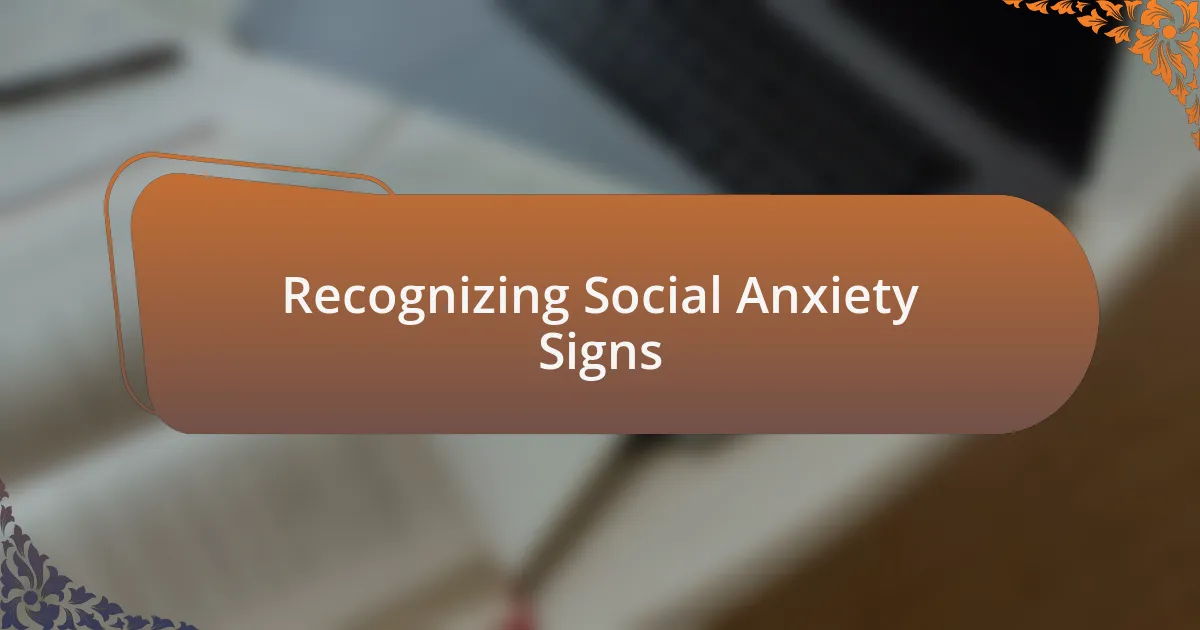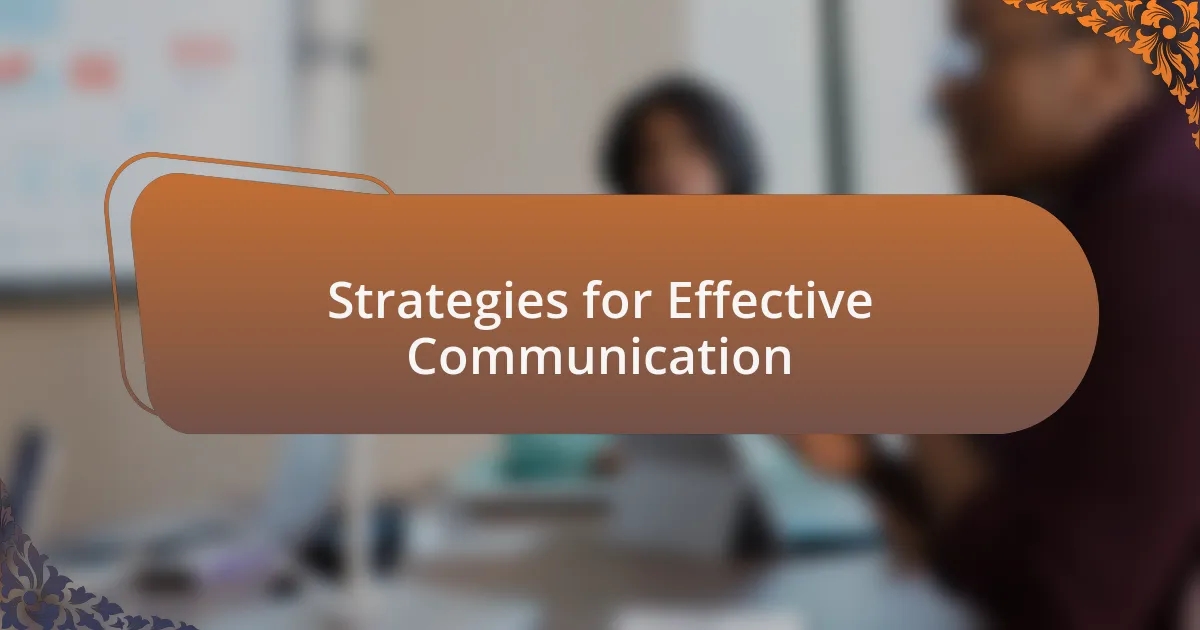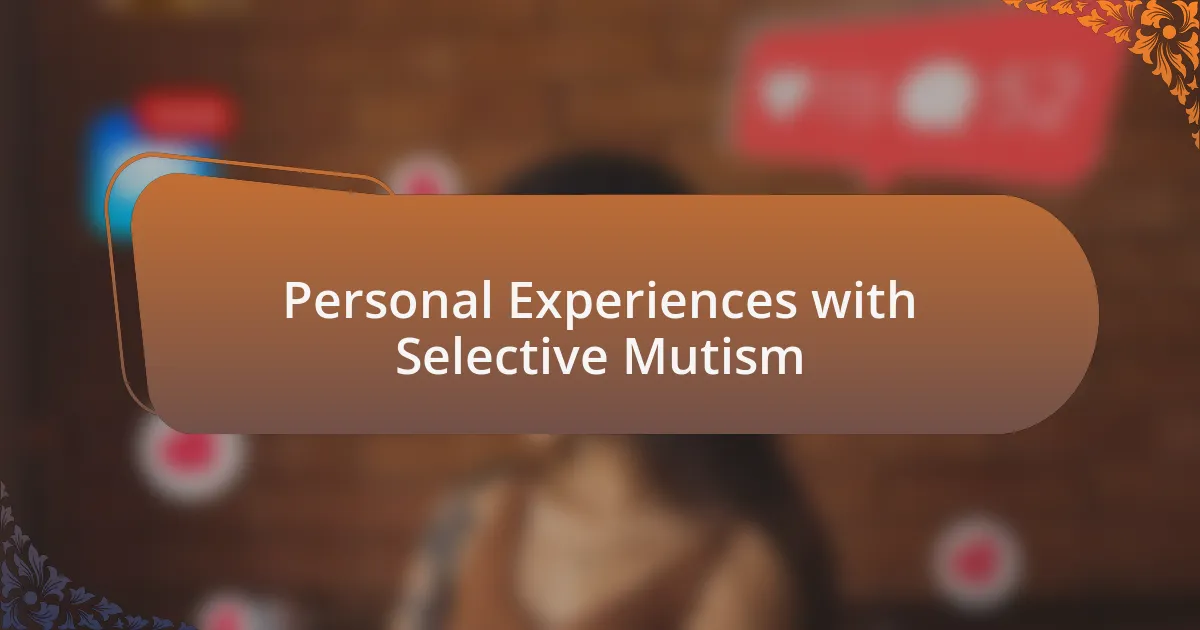Key takeaways:
- Selective mutism is often rooted in anxiety and leads to feelings of isolation and the desire to communicate but being unable to do so.
- Recognizing the signs of social anxiety, such as physical reactions and avoidance behavior, is crucial for fostering a supportive environment.
- Preparation techniques, like visualizing interactions and creating conversation starter lists, help reduce anxiety and improve communication in social situations.
- Supportive environments, through understanding individuals and inviting spaces, can significantly ease the experience of those with selective mutism.

Understanding Selective Mutism
Selective mutism is often misunderstood as a mere shyness, but it goes much deeper. I remember a time in school when the teacher called on me, and my throat felt tight; I wanted to speak, but the words just wouldn’t come out. Have you ever felt that inexplicable pressure in social situations, where your mind races but your lips remain sealed?
What makes selective mutism particularly challenging is that it typically emerges in early childhood, often tied to anxiety. For me, the silence wasn’t a choice; it felt more like a wall I couldn’t break through, isolating me even in a crowded room. It’s heartbreaking to think about how many children wrestle with this struggle, wanting to engage but feeling trapped by their own fears.
This condition is often accompanied by strong feelings of embarrassment and frustration. Can you imagine wanting to join in a conversation yet feeling like you’re standing on the outside looking in? I’ve found that understanding selective mutism requires empathy, not just curiosity, as it’s about more than just speaking; it’s about feeling safe and secure in one’s environment.

Recognizing Social Anxiety Signs
Recognizing social anxiety is often about noticing subtle cues in ourselves or others. For instance, I remember a friend who would fidget with her hands or avoid eye contact whenever a group conversation started. These behaviors can be indicators of anxiety, highlighting just how uncomfortable social situations can feel for those affected. Have you ever watched someone retreat into themselves as the chatter escalates? It’s like witnessing a light dim, and it reminds me how important it is to be aware of these signs.
Physical reactions also speak volumes. I used to experience a racing heart and shallow breathing during gatherings, making every interaction feel overwhelming. This heightened state of alertness can be mistaken for mere nervousness, but it’s often a significant indication of deeper anxiety at play. It’s crucial to recognize that these responses aren’t just overreactions; they stem from a genuine sense of fear that something might go wrong in these social settings.
Moreover, the emotional toll of social anxiety can manifest in unexpected ways. One evening, I opted out of a friend’s party simply because the anticipation of speaking to unfamiliar faces made me feel sick. This avoidance behavior is all too common and a clear sign that someone might be struggling with anxiety. Do you relate to this experience? Understanding the signs can help in fostering a supportive environment where individuals feel safe to express their feelings and fears.

Strategies for Effective Communication
Effective communication often hinges on preparation. I remember a time when I felt out of my depth at a gathering. Before the event, I jotted down a few conversation starters and practiced them in front of the mirror. Having those prepared phrases helped me navigate conversations, almost like having a safety net.
Listening actively can also transform interactions. I found that when I focused on someone else’s words, I could momentarily forget my anxiety. It’s fascinating—how engaging with others makes the pressure of speaking less daunting. Have you ever noticed how a genuine smile or nod can set a more relaxed atmosphere? This simple act of connecting can make communication flow much more smoothly.
Another strategy I advocate for is using non-verbal cues to express myself. I often utilize gestures or facial expressions when words elude me. I recall one time in a group where I couldn’t find the right words to contribute. Instead, I nodded enthusiastically and gestured thumbs up to show my support. Did that make me feel less valuable? Absolutely not—instead, it reinforced my presence in the conversation, reminding me that communication is multifaceted.

Preparing for Social Interactions
Before heading into any social situation, I find it incredibly helpful to visualize what the interaction might look like. One time, I sat down and pictured myself in a fun gathering, imagining different scenarios—what others might say and how I would respond. This mental rehearsal eased my nerves and empowered me to enter the space with more confidence. Have you ever tried mentally preparing for an event? It can really change your mindset.
Creating a simple checklist can also be a game-changer. I remember preparing for a family reunion, where I knew a lot of conversations would revolve around updates on life. I listed topics that felt comfortable and relevant, like recent hobbies or favorite shows. The act of writing it down not only organized my thoughts but also made me feel equipped, almost like having an invisible support system with me.
When the moment finally arrives, grounding techniques can ground you emotionally. Just before entering a room, I often take a few deep breaths and remind myself that it’s okay to be myself—even if I don’t always speak up. In one instance, I was about to join a group where I felt out of place. But I paused, took those breaths, and told myself that my quiet presence still mattered. How often do we underestimate the power of just being there?

Creating a Supportive Environment
Supportive environments are essential when navigating social situations. I recall a time at a friend’s party where everyone was mingling, and I was feeling a bit lost. Thankfully, my friend had noticed and, without making a fuss, pulled me into a smaller group where we could chat more comfortably. That simple gesture created a space where I felt safe and visible. Have you ever felt the relief of being in a more manageable conversation?
It’s also important to surround yourself with understanding individuals. I remember going out with a group of colleagues for lunch, and one of them, aware of my selective mutism, took the initiative to include me in discussions without putting me on the spot. That awareness made all the difference; I didn’t feel pressure to speak up constantly but knew my thoughts were valued. Isn’t it reassuring to know there are people who will support you?
Creating physical spaces that feel inviting can enhance comfort as well. For instance, I often choose places that have cozy seating arrangements or quiet corners where I can regroup. I once suggested a café with a relaxed atmosphere for a catch-up with a friend. The gentle background music and warm lighting made it easier to connect without the overwhelming stimulation found in busier locations. How do you choose your social venues to foster a sense of ease and connection?

Personal Experiences with Selective Mutism
Experiencing selective mutism often means grappling with the complexity of social interactions. I vividly remember attending a family gathering where I felt completely overwhelmed by the number of conversations happening around me. In that moment, I chose to step outside for a breath of fresh air. This brief escape not only calmed my racing thoughts but also provided the clarity I needed to re-engage when I returned. Have you ever felt the urge to retreat just to regain your composure?
Another instance that stands out was during a school project presentation. I was terrified, and I could feel the tension building up inside me as my turn approached. However, one of my classmates, whom I considered a friend, discreetly signaled for the teacher to call on him first. His kind gesture diffused some of my anxiety and gave me a moment to gather my thoughts. It truly highlighted the power of compassion in social settings. Isn’t it incredible how a small act of understanding can make a big difference?
Navigating everyday conversations can sometimes feel like an uphill battle. I’ve had countless experiences where people would assume my silence meant disinterest. During a group discussion once, I felt hesitant to share my opinion. Yet, when someone paused and encouraged me to chime in, it felt as if a weight was lifted off my shoulders. It reminded me how vital it is to foster an atmosphere where everyone feels invited to participate. Have you experienced similar moments that helped you break through the barriers of silence?

Tips for Overcoming Challenges
When faced with a challenging social situation, one technique that has worked well for me is practicing grounding exercises. For instance, I often focus on my breathing, counting slowly to five as I inhale and exhale. This simple practice not only centers me but significantly reduces the anxiety that often bubbles up in social settings. Have you ever tried grounding techniques to regain control in overwhelming environments?
Another strategy is to prepare conversation starters beforehand. I recall attending a networking event where I felt utterly unprepared. However, I made a list of topics that interested me, like recent films or books. When I found myself in front of someone new, these starters created moments of connection that relieved some of my nervous energy. Doesn’t it feel less daunting to approach someone when you have a few topics in your back pocket?
Setting achievable goals can also be a game changer. For instance, I aimed to speak at least once in a casual gathering, and each successful attempt fueled my confidence for the next. There were nights when I walked away proud of having shared a thought, no matter how small. How empowering is it to celebrate those small victories in the journey of overcoming selective mutism?